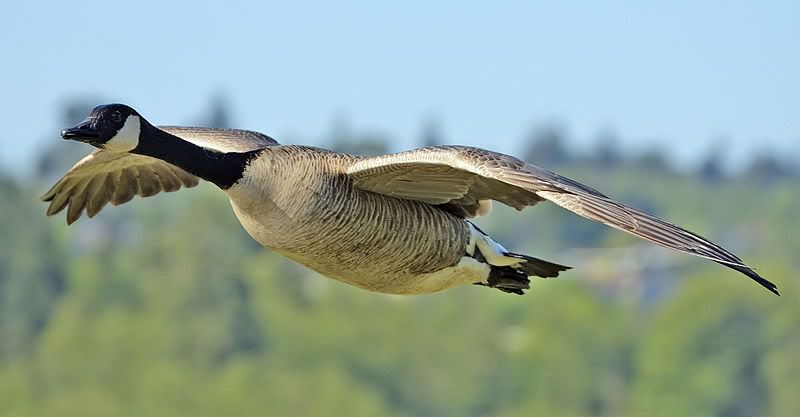Wildlife damage management is a growing industry. Visit any city and you can see a variety of birds flocking to parks and bodies of water.
Animals adapt to our urban sprawls but are sometimes considered nuisance animals by those who are running pristine resorts, golf courses, airports, college campuses, and other industrial businesses.
In most cases the birds are creating the most concerns but raccoons and other animals can be a problem.
A whole industry has arisen around nuisance animals and there are lists to help you find wildlife control operators and even people who specialize in training “goose dogs” to help out.
Usually other animals avoid humans but the birds acclimate and congregate in large numbers creating undesirable conditions by leaving lots of bird droppings on the ground and creating other health hazards.
Barbara Ray (Ligon) a breeder and trainer of Border collies estimates that there are over 400 Border collies doing wildlife control work on golf courses, estates, and corporate properties nationwide.
 One way to control the birds is to use dogs who have been through precision training. The canines persuade geese to vacate the premises through natural behaviors that are controlled through verbal cues and specific whistles.
One way to control the birds is to use dogs who have been through precision training. The canines persuade geese to vacate the premises through natural behaviors that are controlled through verbal cues and specific whistles.
Border collies are one of the most popular workers in this field. They are genetically fine-tuned for the job and those that are best for the job are the pups who are friendly and well socialized and who lack noise phobias or other fears.
Nuisance bird control dogs usually begin training when they are a year old and are ready for the job by the time they mature usually about two or three years of age.
Training includes traditional efforts of herding sheep but also includes special training to train the dogs to go into the water and working in it.
The Border collie is a popular choice because of the dog’s natural tendency to herd and the good temperaments and enthusiasm of the breed.
If not trained properly the breed’s instinct can become an obsession where the animal strives to control and herd the most prevalent animal around.
In general it is thought, that the best dogs for the job are those dogs who do not get frustrated when their charges take off in flight.
You can even hire in a goose management team which is just one of the options to managing nuisance geese.
Is this type of career up your alley?



